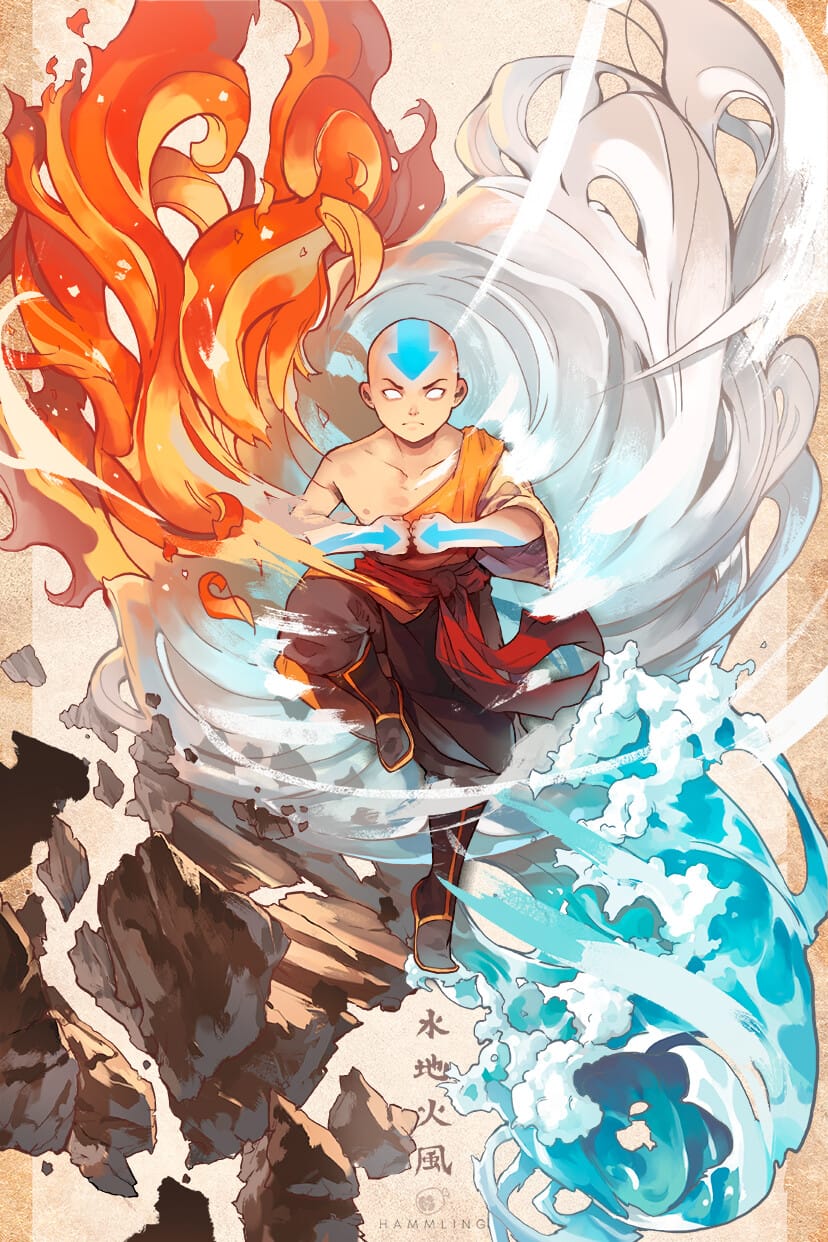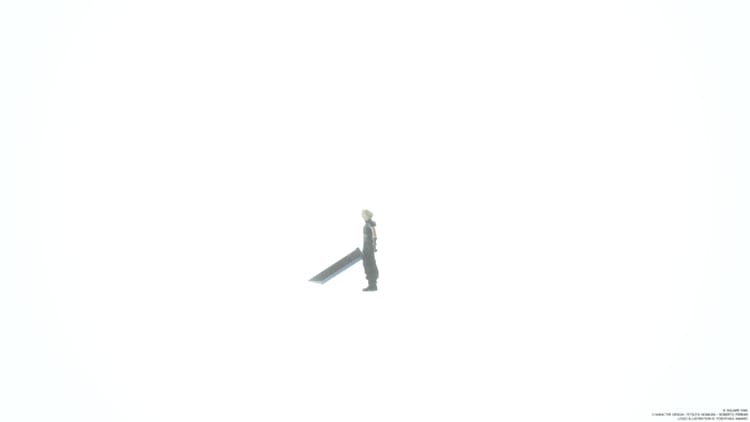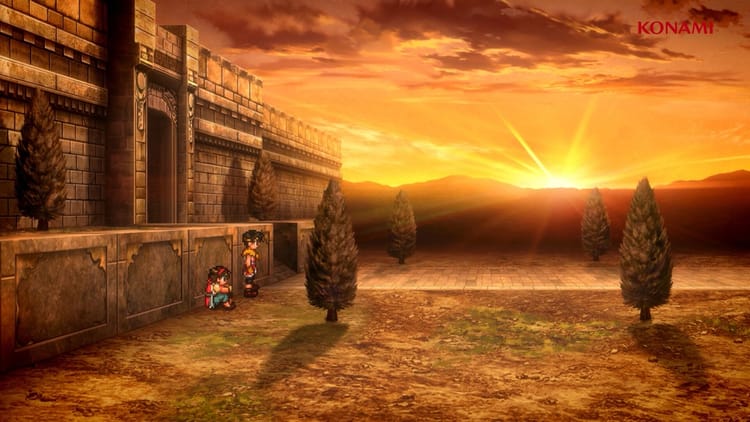Avatar: The Last Airbender is brilliant

Pop Culture is full of phenomena. These capture the imagination of millions, and dominate talk around water coolers, social media and pub tables. Many factors lead to the formulation of such zeitgeists, such as focussed marketing, fresh storytelling that taps into flash-in-the-pan societal fears and interests, a bold take on traditional concepts, or, well, because they’re just easy and accessible. Such phenomena, by their very nature, come and go. They sweep through fans like a fever, and burn out just as quickly.
LOST was a cultural phenomenon… until the second and third seasons when the show-runners jumped the trails and lost control of their script. The same thing happened with Game of Thrones. Remember when “Gangham Style” swept North America, Europe and the rest of the world? Yet Psy, the Korean musician behind the hit, never released another song which significantly impacted Western pop music. (Though, K-pop as a genre has become an enormous fixture among western listeners.)
There are phenomena like Pokemon: a weird, complex Japanese video game and television series that captured the attention of children in the late 90s and hasn’t let go. Each new iteration of the video game series sells millions of copies, and the animated series is still running today.There's also J.K. Rowling’s Harry Potter. When it first rose to wide prominence at the turn of this century, it was easy to dismiss Rowling’s work as a fad. But then it kept on going, and going, and going. Harry Potter and his friends Hermione Granger and Ron Weasley are now literary staples on the same level as Bilbo Baggins and the Pevensies. (Rowling herself, however and unfortunately, has remained relevant for more regrettable reasons.)
There is also a third kind of phenomenon. It arrives quietly and builds a small, but fervently dedicated core of fans early on. Instead of rushing through a wide audience, burning itself out by overexposing itself, it plants seeds and digs itself in deep among this passionate base. Slowly and surely, its roots spread through the community. These fans begin talking about the show with anyone who will listen. Slowly, the audience builds and, long after its initial release, it becomes clear that it is an important medium- and genre-defining piece. Avatar: The Last Airbender belongs in this last category. It changed the way I think of television.
Everyone knows a friend who always has a suggestion, a machine of seemingly unquenchable knowledge and taste. Sometimes they steer you wrong, but they’re right. For me, this is my best friend, James. He doesn’t factor into much of the discussion here, except that he first introduced me to Avatar His constant praise of the series stuck in my head, and, upon completing the show early in 2013, several years after its first release and a couple of years after he started badgering me about it, I wondered why I hadn’t listened to him sooner. Within the wider community of fandom that I find myself, people would always praise Avatar, and spout superlatives about its quality, and how much they love it, but never really explained why the show was worth showering with such praise.
So, I want to dig into that. This is my exploration and explanation of Avatar: The Last Airbender. By the end, I hope you’ll understand why you need to watch it.
The Plot
Avatar: The Last Airbender is the story of Aang, the titular last airbender, his friends, and his enemies. Together, Aang and his many companions work always towards defeating the Fire Nation, one of the four nations of Aang’s world, who are bent on conquering the remaining nations—the Water Tribe and the Earth Kingdom—to bring all the people of the world under the rule of the Fire Lord Ozai.
Aang is the Avatar, a person of heightened spiritual and magical ability who is destined and relied upon to be a neutral force between the four nations (despite always being born into one of these people, on a predefined cycle), and to enforce peace and balance among them. There is only one living Avatar at a given time, and the next is born on the current Avatar’s demise, natural or otherwise. Aang was born into the Air Nomads, a society of people destroyed by the Fire Nation in their search for the Avatar and their quest for conquest.
This is only what Avatar is about on the surface. You’ve seen it all before: a group of plucky unlikelies pitched against a seemingly insurmountable foe, fighting for peace, freedom and revenge. Aang’s group of friends, which grows vast over the show’s three seasons, are all of these things and so much more. They're mothers and sons, lovers, soldiers and spiritual touchstones. They are enemies and friends at the same time. They are stoic leaders and frightened followers. They are out for revenge, and they are out to find whatever it takes to fill that hole where such revenge lives and burns. The breadth of these characters is wide, and this range allows the show to be about so much more than defeating the Fire Lord. It’s about relationships and creating a world where love, honour and family can exist freely in their purest form.
One of the most effective and beloved episodes in the entire series, “Tales from Ba Sing Se,” comes midway through the second season. It doesn’t move Aang even an iota closer to defeating the Fire Nation, but nonetheless represents the very core and heart of the series by showcasing why Aang is working so hard to deliver freedom to a world that has been so harsh and destructive towards his people.
This episode is twenty-four minutes long, just like the rest of the episodes, but is constructed of several short stories, following various characters as they spend a day in Ba Sing Se, the crown city in the Earth Kingdom. There is rarely traditional, TV-style conflict in these stories, at least not relating directly to Aang’s overall quest, but they are thrilling vignettes that pull back the curtain on these characters and reveal parts of them that other shows would leave hidden or unexplored.
Toph, a blind earthbender, struggles with her self-identity, juggling her natural brashness and tomboyishness with the desires of a teenaged girl who, for the first time in her life, has other female friends. It’s a simple story, and perhaps skews too closely to gender normativity, but it’s nice to see Toph from a different light, and such self-exploration allows for growth in small, delicate ways. Similarly, Zuko, one of the series's primary antagonists, struggles to balance his latent frustration and lack of self-confidence against a pretty girl who shows romantic interest in him for no reason other than that she sees a piece of the gentle soul that he has worked long to hide beneath his tough exterior.
Around the same time, there’s an episode that tells the story of how Appa (Aang’s giant air buffalo, which provides transportation to the party throughout the entire series) escapes his kidnappers. Appa cannot speak, so the episode features very little dialogue, outside of discussions between the characters that interact with Appa as he searches for Aang. But there's still impactful emotion and clear motivation to Appa’s actions, making it one of the best episodes in the entire series, even without the presence of the main protagonists Aang, Katara and Sokka. Such creativity abounds in nearly every episode, sometimes in small touches, like Aang’s friendship with a disabled boy who finds freedom in flying, and sometimes in sweeping gestures, like Appa’s journey.
The Characters
While plot is often defined by the journey from point ‘A’ to point ‘Z,’ and everywhere in between, Avatar: The Last Airbender clings to F. Scott Fitzgerald’s idea that “character is plot, plot is character.” Like any successful narrative, Avatar finds strength in the core of its characters that provide narrative thrust. From the main group, Aang, Katara, Sokka and Toph, to their enemies, Zuko, Iroh and Azula, each character has their own unique arc and developmental growth that affects the ebb and flow of the power struggle between Aang and the Fire Lord Ozai.
Too often, television shows, on the basis of their ongoing, episodic style of storytelling, begin with a group of interesting characters, identified by one or two strongly defined character traits, but never take these characters anywhere interesting, or, conversely, develop them in ways that offer drama and plot twists for viewers, but feel disingenuous towards the characters themselves—the characters are in service to the plot, rather than the other way around. It’s clear, however, that Avatar show runners Michael Dante DiMartino and Bryan Konietzko deeply explored its characters and understood the path they needed to follow before they sat down to pen even the first episode. When the final episode ends, Aang, Katara and Sokka are very different people than they were at the beginning of the series, but they also feel true to those naive children who we first met around a mysterious iceberg.
The series begins with Aang as the central force of power and change within his group, but over the course of the eight months covered by the events in the show, Katara, Sokka, Toph and the rest of Aang’s companions, including some of his enemies, undergo their own transformations of character, physical, mental and emotional, that allow them to ascend beyond their childhood and join the Avatar as an integral piece in opposing the Fire Nation. This all culminates in an intensely satisfying finale that sees each the series’ main characters face down their fears, shortcomings and hopes, and use the strength and knowledge gained along the way to help Aang towards victory.
It’s easy and convenient to discuss Aang and his growth as he comes to grip with his many struggles, including the extinction of his people, his duty as Avatar, and his education in the bending of the four elements. He’s a likeable protagonist, whimsical without being dismissible, and humourous in a way that makes his moments of despair even more poignant. He lies at the heart of the show. However, his development and path through Avatar is not the show’s most compelling piece. That’s Zuko, exiled prince of the Fire Nation, and chief opponent of the Avatar.
Zuko is a fierce hunter who doggedly chases Aang from, literally, pole to pole and around every other corner of the world. He seeks to extinguish the Avatar, though his motives are not nationalistic, but personal. To his disgrace, he was exiled by his father, the Fire Lord Ozai, for his weakness, a trait despised by the Fire Lord, and, though his Uncle, the great Fire Nation general Iroh, counsels him otherwise, Zuko believes that the only way to regain his father’s respect, and, by extension, his honour, is to defeat the greatest threat against his father’s dreams of conquest: the Avatar. Nobody in the show struggles more than Zuko with the dichotomy between their moral core and the idea that they must act against their beliefs for the greater good. There is much anger in the young prince, and the show slowly peels back the layers of his past, exposing the demons that haunt him, many of which manifest in his sister, who has her own struggles. Slowly, I found my contempt for Zuko evolving from pity to true compassion. He's a lost boy, caught between duty, shame and self-identity, and his story is a perfect execution of the path boys journey on as they grow to adulthood.
Zuko and Aang travel paths that are at times parallel, and at other times intersecting, and the writers handle their mirrored struggles of balancing the weight and duties of adulthood with delicacy and impressive depth. Together, they're a wonderful example of how characters can grow, evolve and change slowly over time, becoming, before the eyes of viewers, a new person, without shedding the shell of their former self.
The Magic
Love him or hate him, there's Brandon Sanderson, author of The Stormlight Archives, stands heads-and-shoulders above the rest of the field when it comes to developing intricate and logical magic systems that inform his plots, his world building and the development of his characters. Whether its one of the several metal-based magics in his Mistborn series, Soulcasting in The Stormlight Archives or the colour-based magic in Warbreaker, Sanderson tackles mysticism like science, digging deep into the logic of how the system will work, not only as a physical tool for battle, as magic so often becomes in fantasy, but also how it will affect the industry and culture of his worlds. Most of these systems are so deeply thought out and well-documented that they could (and have in the case of Mistborn) sustain Pen & Paper Roleplaying Games.
I speak of Sanderson and his magic systems because it seems impossible to discuss the magic in Avatar, called “bending,” against anything but the most intricate that fantasy has to offer. To compare it only against other television series would be unfair. Bending is at the core of the series, and without it every single aspect would be different: the world and its societies could not exist in their current form; the personality of the characters would be changed; the conflict between the Fire Nation and the rest of the people would be moot. Magic is Avatar: The Last Airbender.
Bending is split into four distinct types: waterbending earthbending, firebending and airbending. Each type of bending correlates directly with one of the four elements and one of the four nations. For anyone familiar with Robert Jordan’s Wheel of Time series, the similarity between the two magic systems will be obvious, though I don’t know how much direct influence Jordan’s system had on the creation of bending. Where Jordan’s system, which sees its magic users creating ‘weaves’ of similar elemental magics to create their spells, is more ethereal and happens invisibly to those without the ability to cast magic themselves, bending manipulates the surrounding environment itself. This allows for some truly astounding action sequences, seeing combatants encasing themselves in armour made of the stone beneath their feet, freezing themselves in blocks of ice alongside their opponent, and then moving within the ice by turning it to water and air in a bubble around themselves, or bending the water in the blood of their opponents, giving them a twisted control over their opponent’s very bodies.
There’s a variety and visual splendour to the action and the creative manipulation of environment that is constantly thrilling and is difficult to describe here in words. Each episode of Avatar: The Last Airbender offers something new, some interesting twist of a magic system that grows to great depths.
The World
Guided by this core of magic, each of the nations in Avatar: The Last Airbender is based around the fundamentals of the element which controls their industry, culture and military power. From the peaceful, nomadic Water Tribe who live at either pole, to the industrious Earth Kingdom, mighty and innovative, to the cultural and militaristic strength of the Fire Nation, the people and lands of the world are divided by clearly defined lines. Or so it seems at first glance.
Missing among those listed above are the Air Nomads, the peaceful and spiritual people into which Aang was born, as part of the continuous cycle that determines which nation will bear the next Avatar when the previous one passes away. These airbending people share a recognizable philosophical core with several eastern monk societies, reflected by their traditional orange robes, and, at least in the current cycle of the Avatar, were a peace-loving and calm people, focussed on well-being and spirituality, and with little-to-no obvious military at the time of Aang’s birth. They are, without doubt, the foil of the Fire Nation, and its no surprise that when the Fire Nation decided to begin its conquest against the other nations, the Air Nomads are their first target: home of the Avatar, and an easy target for destruction.
Much of contemporary epic fantasy literature is defined by its ‘worldbuilding,’ the act of the author creating a world that is recognizable to the reader, yet alien, exciting and deep enough that the reader can feel like she is travelling, so to speak, while with a nose in a book. These days, ‘worldbuilding’ often consists of taking an age from our past Earth and casting it in a setting that contains something unfamiliar to us, usually magic. From that one wrinkle spawns new culture, new history and new rules. These worlds reflect our own, often deeply complex in their social, political and cultural construction, and attempt to reveal something of us by examining issues through the lens of an alien place.
Avatar takes a more straightforward approach to building its world. It’s not afraid to lay down the basic idea that the four people, and all their culture, are separated into these four distinct nations. Each nation comes with its own strengths and weaknesses, buoyed by their respective bending powers. The people of the Earth Kingdom are strong of body and will, and industrious. The people of the Fire Nation are motivated and passionate. The Air Nomads are enigmatic and spiritual. The Water Tribe are tight knit and compassionate towards all. These traits define the people and, woven together, create a world of balance.
But, where Avatar truly shines is in the way that it segregates its people into these four distinct cultures but then, through the lens of Aang's travels, reveals that country lines are often little more than markings on a map. Aang meets many people along his journey, some who he becomes fast and enduring friends with, some who flit in and out of his story, and some who come and go in only moments, but they’re all clearly defined in their personalities and showcase the wonderful diversity that is found in our everyday life. Though each of the nations is described by a common set of traits, such as the fiery, imperialistic Fire Nation, or the soulful Water Nomads, Aang meets people who constantly break out of the archetypes assumed for them by their birth nation. There are caring and kind Fire Nation people, such as the aloof swordsmaster Pindao, and bloodthirsty, unpredictable Earth Kingdom people, like rebel leader Jet. Just like you and I are individual people, shaped but not defined by our societal values, the characters on Avatar are a product of where they were raised, and their worldview is often coloured by their upbringing, but are also complex human beings and no two are the same, no matter which of the four nations saw their birth.
The Art
Avatar: The Last Airbender is a beautiful show. From the diverse, Asian-inspired costume design, to the careful attention paid to showcasing the variety of the world’s ethnic backgrounds, to the subtle facial animations and body language of the characters, the show has an attention to detail that often made me smile, but most often simply impressed me with its variety.
Before I began the show, I was a little put off by the initial character designs. Aang had a stupid arrow on his head, Zuko’s ponytail and scar looked cheesy, and what’s with that big, flying fluffy animal they ride around on? Looking back, I see now that I was uncomfortable with a cartoon that didn’t prescribe to the generally accepted rules on character design. The main character wasn’t a plucky, unassuming avatar for me, the viewer, and the bad guy looked over-the-top evil because he's trying too hard to look tough. These things change over the course of the show, and now I couldn’t imagine a cast who appears any less unique and distinct from the show’s beginning to its end.
One of the most interesting techniques used by the artists is reflecting changes in the characters by altering their visual appearance. Throughout the show, particularly with Zuko, the characters’ hair and outfits will change and slowly evolve. Midway through the series, Zuko cuts off his trademark ponytail, eschewing his place in the world and leaving it behind with the fallen hair. As episodes pass, his hair grows and this therapeutic exercise in sacrifice brings a constant reminder to the viewer that Zuko is transforming. By the end of the series, his appearance is altered as significantly as his personality and moral compass. Another interesting example is a portion of episodes that require Aang, bald and with a traditional Air Nomad tattoo running boldly along the crown of his head and down his forehead, must grow his hair out to hide his identity from those who hunt him. There is much tied up in the recognizability of television characters, especially in animated shows aimed at a younger audience, and this bold move to slowly alter and transform the visual identity of these characters marks an admirable confidence in the showrunners.
The costumes and city design of the world and its people is just as inspiring and innovative as the character designs. These cities embrace their nations best attributes, from the towering mountain cities of the Earth Kingdom, to cities carved from ice by the Water Tribe, and each episode showcases terrific creativity by the artists working on the show.
It is impossible to explore the art of the series without paying due to the choreography and splendour of the magic and action sequences. I’ve spoken at length about these aspects of the series already, but there is an obvious excitement in the show’s producers and audience for creativity and visual appeal that allows the animators and show writers to have fun with the magic in both action and non-action sequences. No television series, animated or not, deserves cinematography this good.
In Conclusion
Where most American television, and a lot of popular anime that makes it to North American shores, fails to pace itself correctly, instead extending itself over hundreds of episodes with sparse, drawn out content (Dragonball Z), or poorly planned and executed plot arcs that fail to deliver on early promises (LOST, Game of Thrones), Avatar: The Last Airbender is a remarkably consistent piece of storytelling that retains its quality from the first episode to the last. In fact, even if pressed, I’d find it difficult to find a point in the entire series where pacing is ever an issue. Every episode, even the sidestory episodes that don’t directly involve Aang’s plot against plight against the Fire Nation all serve a purpose in the tale, revealing more about the characters and their world. There’s not a wasted frame, not a wasted word, and that’s something that can be said about so few pieces of fiction, no matter the medium.
It’s brilliant.
Support
There are lots of ways to support Astrolabe and my other work. Check ‘em out!
Keep In Touch
Enjoy Astrolabe? Want more SFF and retro gaming goodies? You can find me on Twitter and my website.
Credits
Astrolabe banner photo by Shot by Cerqueira on Unsplash






Member discussion